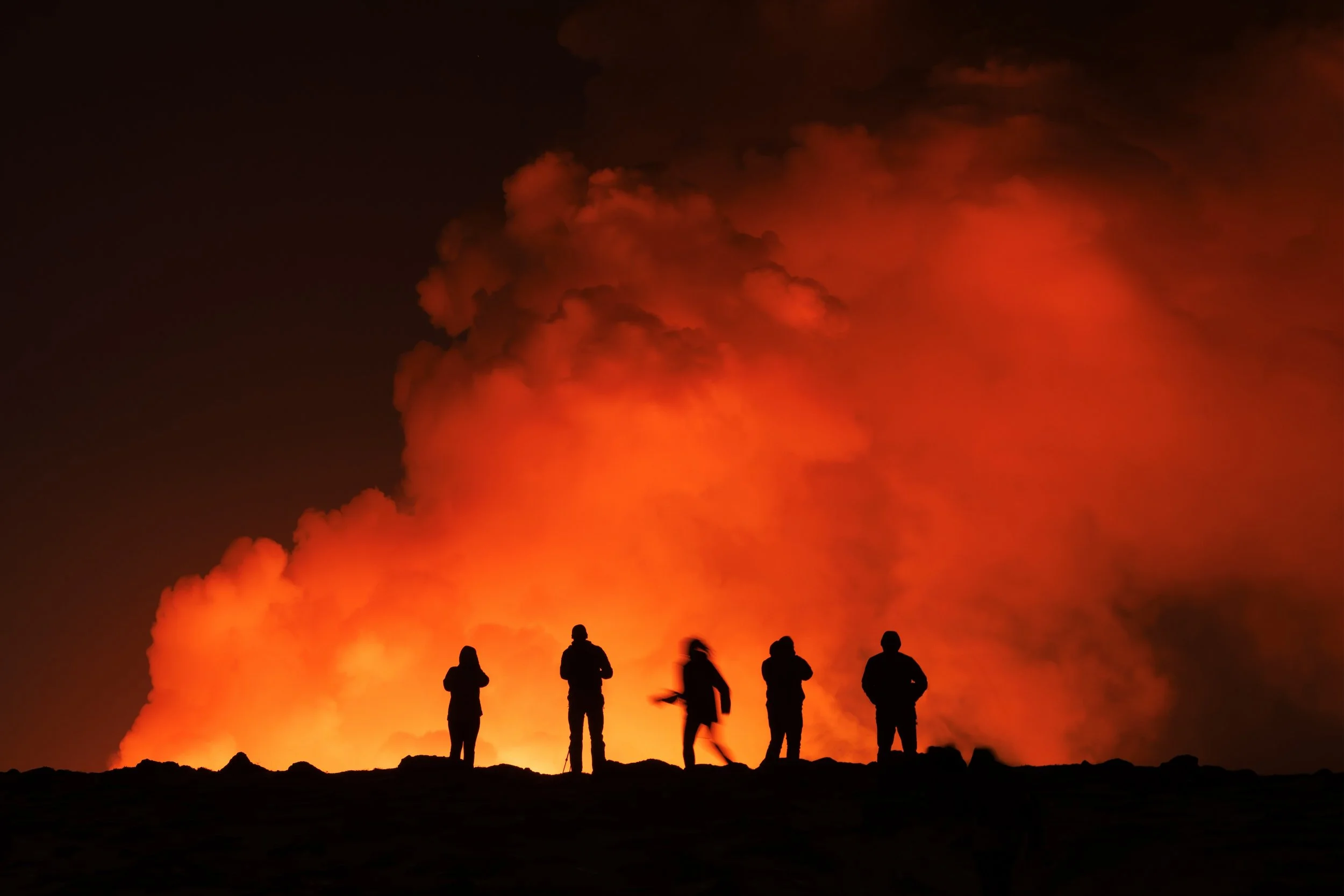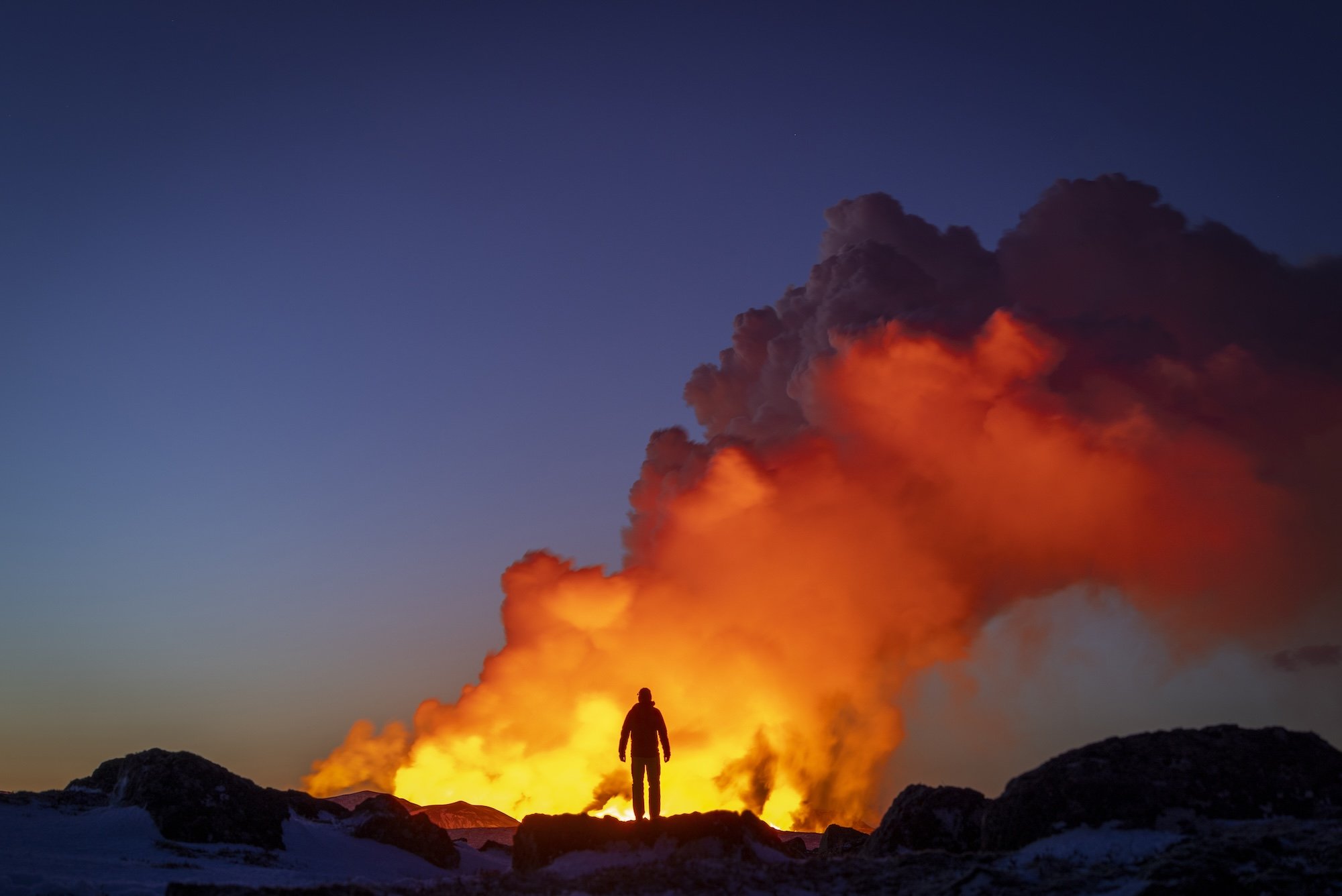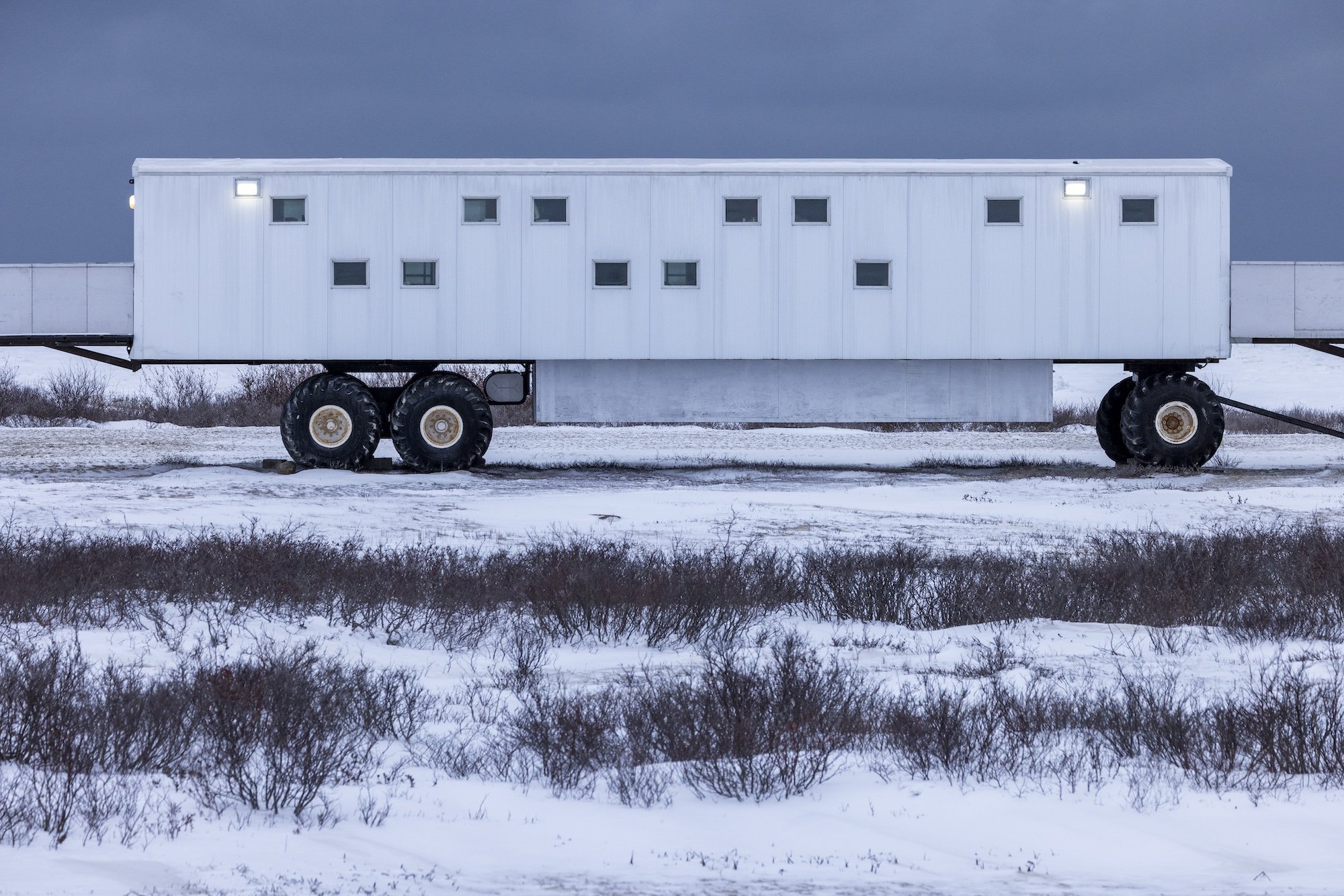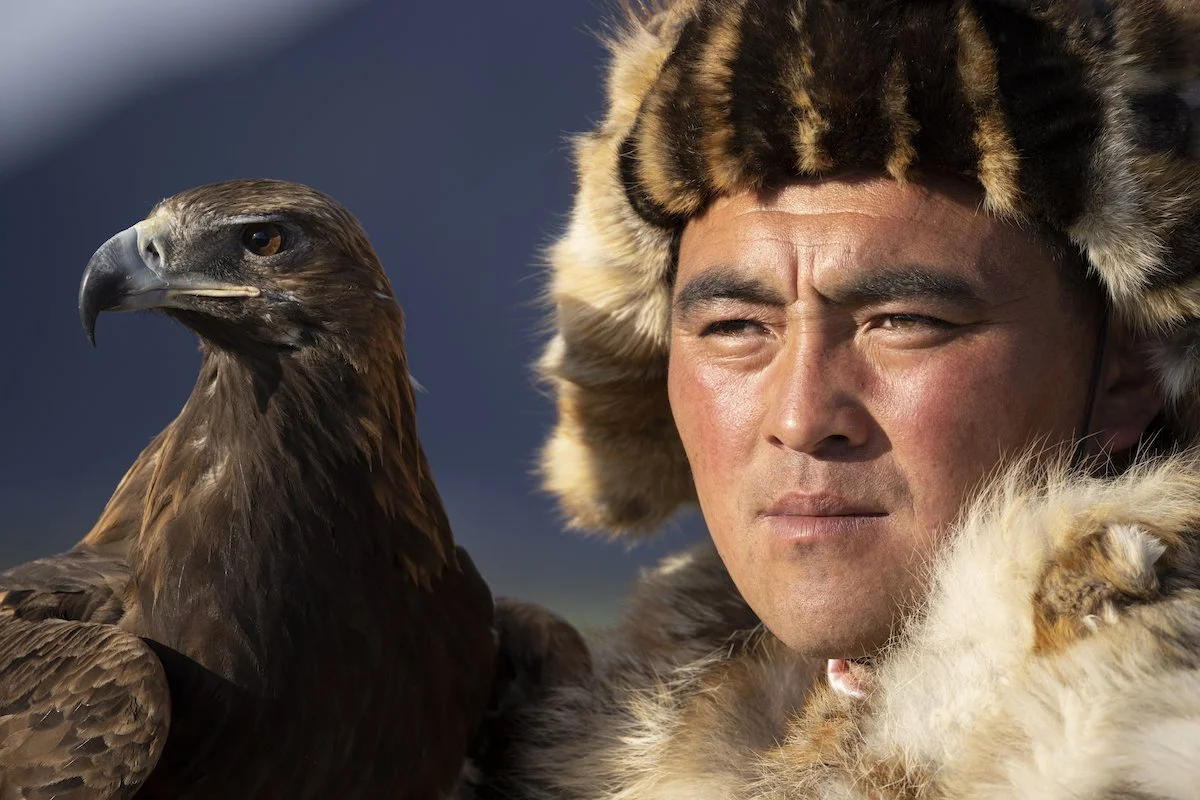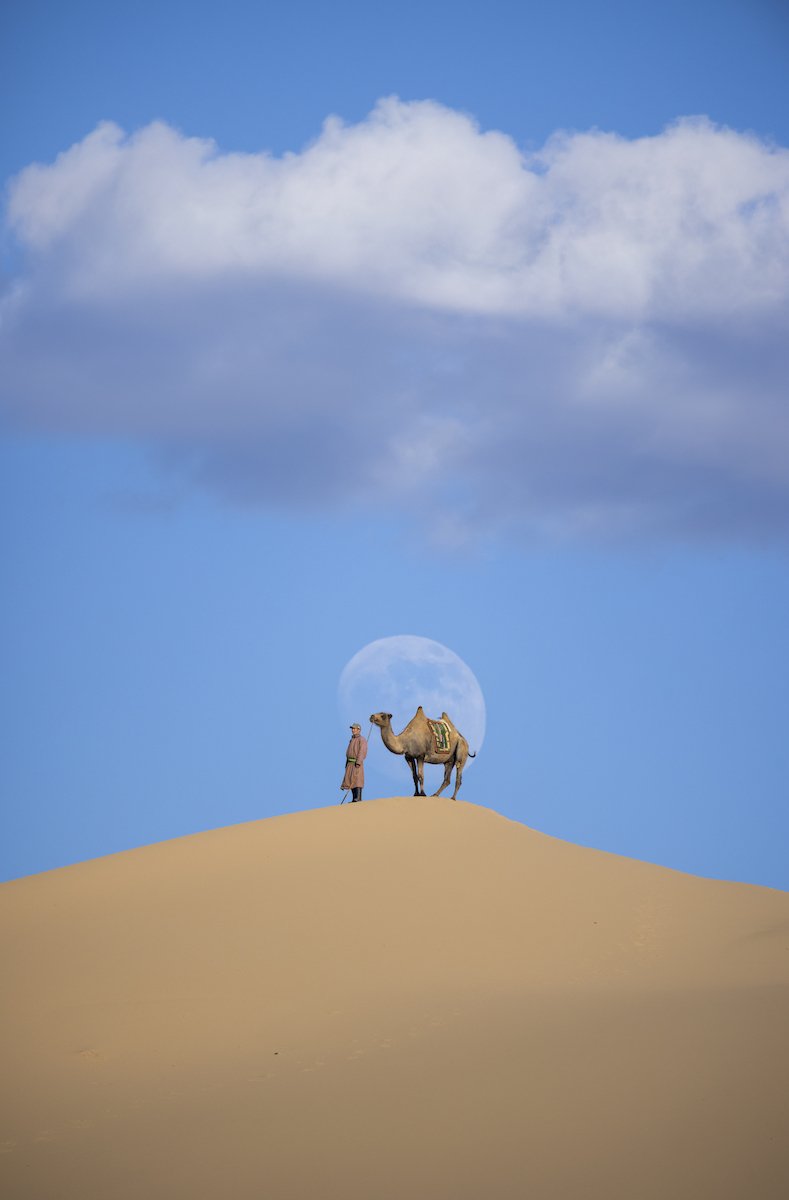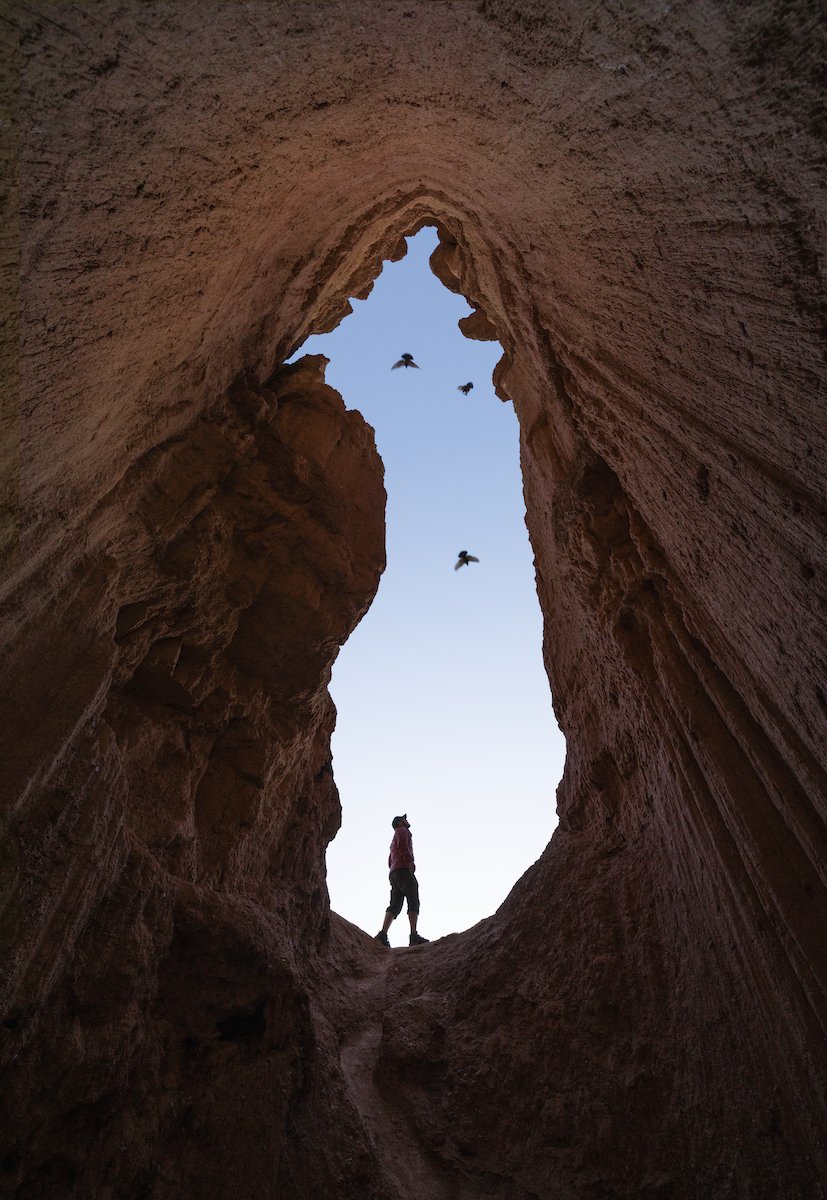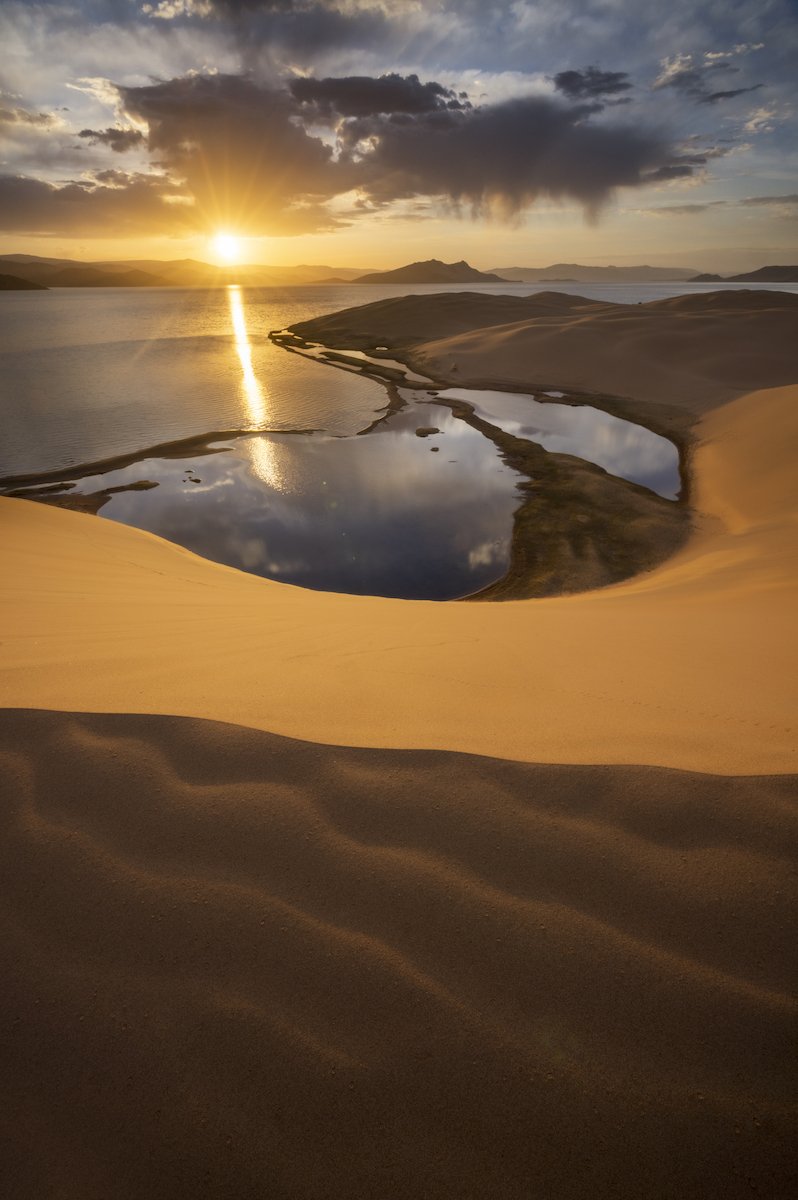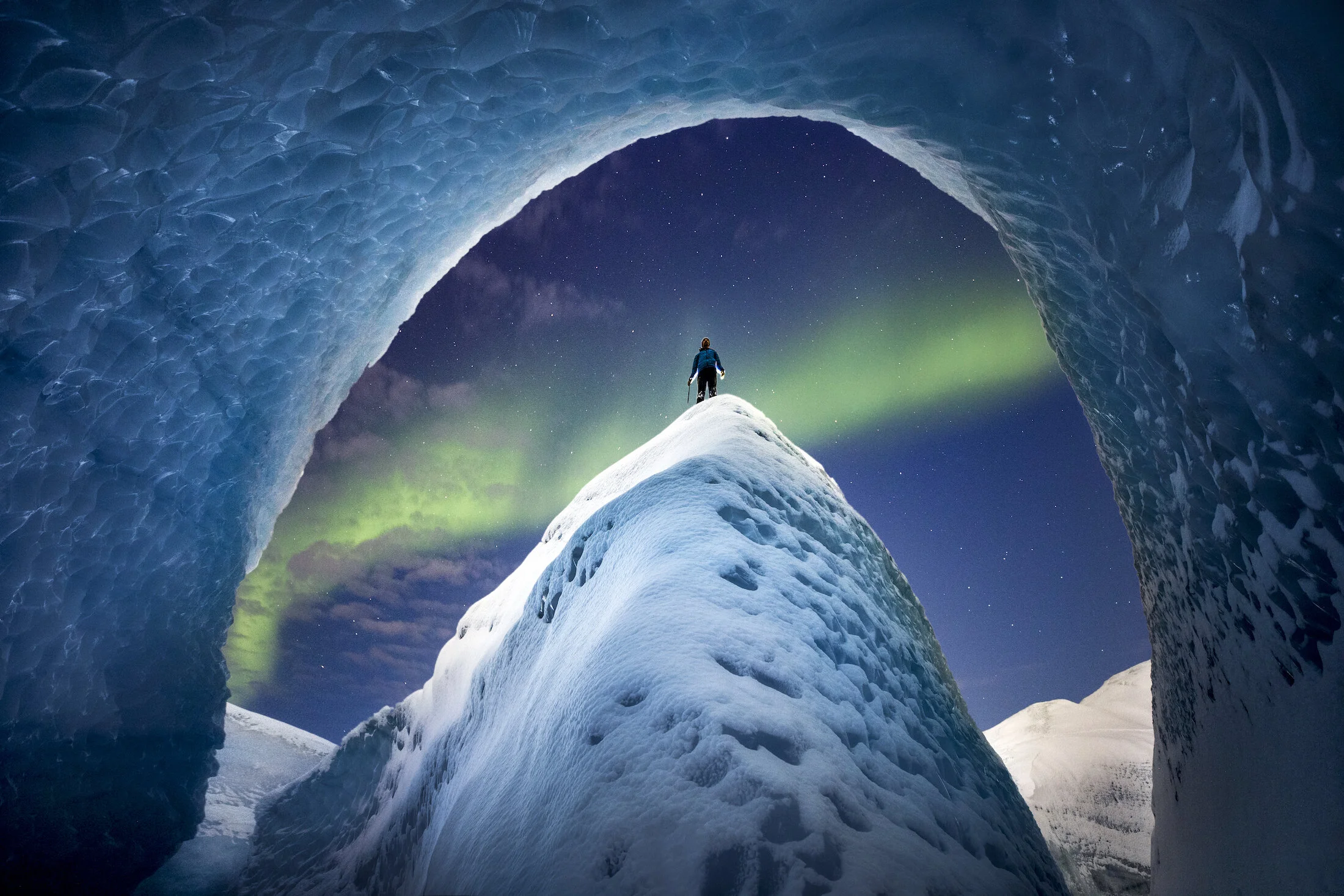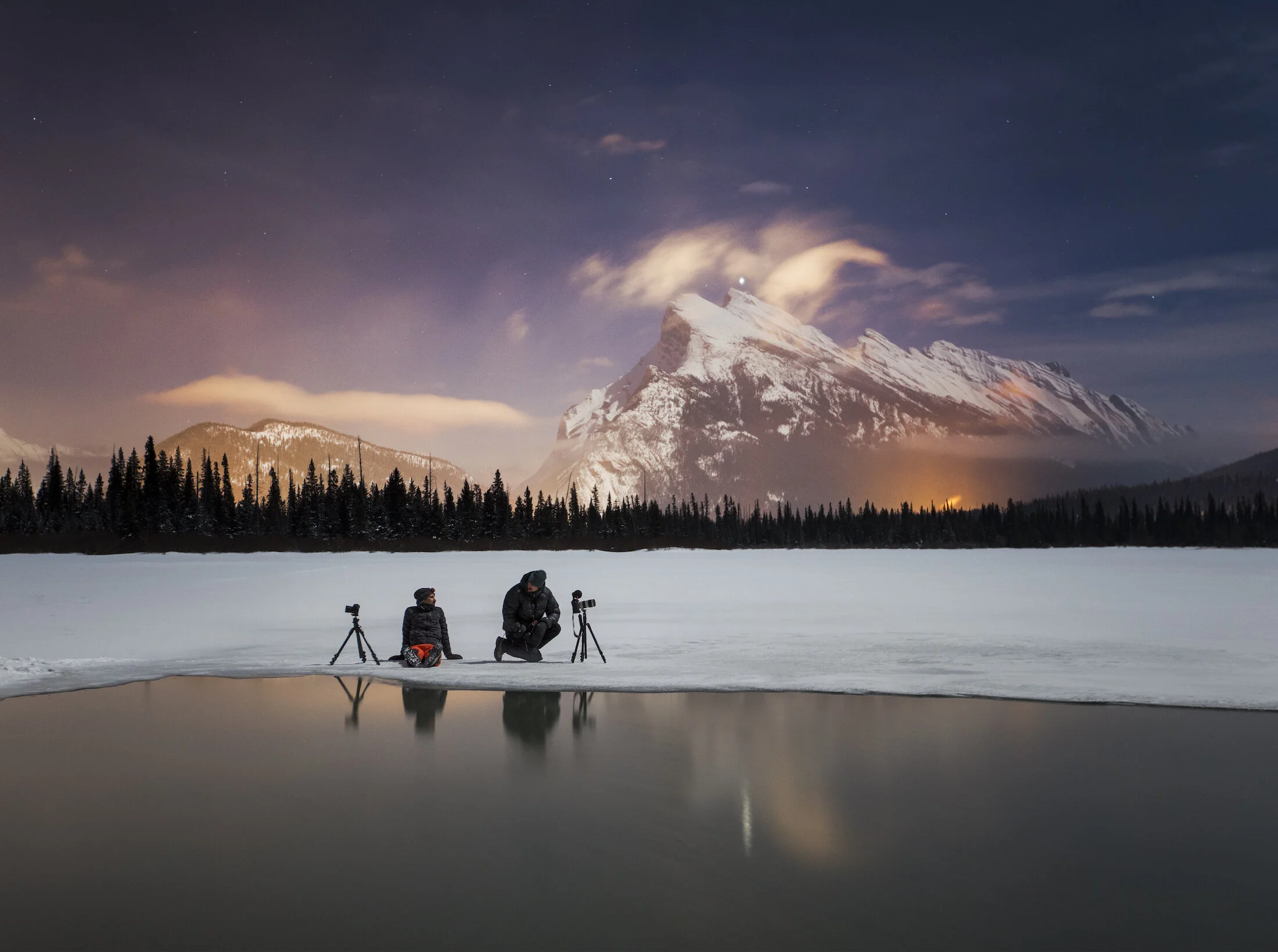
Documenting the Sundhnúkagígar Eruption in Iceland
Iceland has long captivated me with its dramatic landscapes shaped by volcanic activity. Even before I became a photographer, I was enthralled by this island. At the conclusion of my undergrad in Earth and Ocean Sciences, I walked across Iceland and became familiar with its rugged terrain. Since then, I have returned several times, including this month when the Sundhnúkagígar eruption occurred.
Iceland has long captivated me with its dramatic landscapes shaped by volcanic activity. Even before I became a photographer, I was enthralled by this island. At the conclusion of my undergrad in Earth and Ocean Sciences, I walked across Iceland and became familiar with its rugged terrain. Since then, I have returned several times, including this month when the Sundhnúkagígar eruption occurred.
Our OFFBEAT group capturing the eruption later on the day we were evacuated, from a safe distance. Photo: Paul Zizka.
I was staying at the Northern Light Inn with a group, co-leading an OFFBEAT photography workshop, when on our last morning we were awoken very early by the call to evacuate. Just two kilometres away, a volcano erupted along a three-kilometre fissure northeast of Mount Sýlingarfell. We promptly packed our bags and within 20 minutes were walking to our vehicles to join a convoy away from the area. Soon, we got sight of the lava fountains shooting 80 metres into the air. It was an unforgettable experience, and somewhat painful for a group of photographers who would have loved to capture it on camera. But, safety first - we got out and soon after the lava flowed across the road.
CBC’s The National featured the events and a short interview with me on February 12, 2024.
Later, from a safe distance our group was able to observe and photograph the eruption. It will stand as one of the most remarkable and surreal experiences of my life. I am grateful there was no loss of life, though the lava did burst a major water pipeline, leaving several communities on the Reykjanes Peninsula without heat and hot water.
Here are a few more photographs and videos from the events that transpired that memorable experience.
→ I’m heading back to Iceland in 2026 with OFFBEAT! Learn more here and join us for this next adventure!
Workshop participants capturing an unforgettable moment. Photo: Paul Zizka.
A self-portrait taken with the distant lava fountains (Canon RF100-500). Photo: Paul Zizka.
Self-portrait with the Sundhnúkagígar Eruption in Iceland. Photo: Paul Zizka.
Sundhnúkagígar Eruption in Iceland. Model Kris Andrea. Photo: Paul Zizka.
See more in the news:
Iceland's erupting volcano an 'unforgettable' close encounter, says Alberta photographer
If any of these images catches your eye, please reach out to me for any custom print orders. I’m happy to print in a variety of sizes and formats.
Polar Bears and Northern Lights: Photographing in Churchill, Manitoba
Nestled on the edge of the Arctic, where the icy embrace of the Hudson Bay meets the rugged terrain of the Canadian wilderness, lies Churchill, Manitoba. Known as the "Polar Bear Capital of the World" and a prime destination for witnessing the Northern Lights, Churchill had been on my bucket list for years. I was finally able to make the trip in November 2023.
Nestled on the edge of the Arctic, where the icy embrace of the Hudson Bay meets the rugged terrain of the Canadian wilderness, lies Churchill, Manitoba. Known as the "Polar Bear Capital of the World" and a prime destination for witnessing the Northern Lights, Churchill had been on my bucket list for years. I was finally able to make the trip in November 2023.
If something catches your eye, please check out the Limited Edition print collection on the shop (and reach out to me for any custom prints if you don’t see an image there).
Polar bear walking. Photo by Paul Zizka.
Two polar bears sparring on the tundra. Photo: Paul Zizka.
Housed safely aboard a Frontiers North Tundra Buggy ® I had several days out on the tundra to watch for polar bears, and keep my eyes out for the aurora borealis. Miraculously, everything converged once night and I was able to capture my dream image: a polar bear under the northern lights. What’s more, we had numerous bear sightings, never going more than 10 minutes without seeing one somewhere out there (and often right up next to the buggy).
Frontiers North Tundra Buggy. Photo: Paul Zizka.
Tundra Buggies near Churchill, Manitoba. Photo: Paul Zizka.
Sunset over Frontiers North Tundra Buggy. Photo: Paul Zizka.
Curious polar bear in Churchill, Manitoba. Photo: Paul Zizka.
Polar bear snoozing, Churchill, Manitoba. Photo: Paul Zizka.
A polar bear strikes a regal pose. Photo: Paul Zizka.
One particularly special encounter was witnessing a mother with three cubs. We witnessed an incredibly intimate moment as she nursed them right there in the land. Sadly, one of the cubs was quite emaciated and had a hard time keeping up with the clan. The group became separated and the cub was left on its own, with very little chance of survival. Such is the life on the tundra, which was both humbling and heartbreaking to witness.
A mother bear and three cubs in Churchill, Manitoba. Photo: Paul Zizka.
Three polar bears cubs on the tundra in Churchill, Manitoba. The left-hand one was markedly smaller. Photo: Paul Zizka.
A mother bear nurses three cubs out on the tundra in Churchill, Manitoba. Photo: Paul Zizka.
A mother bear and three cubs in Churchill, Manitoba. Photo: Paul Zizka.
A mother bear scares away a male on the tundra near Churchill, Manitoba. Photo: Paul Zizka.
Mama bear leads her three cubs with another Tundra Buggy ® in the distance. Photo: Paul Zizka.
The stars aligned one night when the aurora borealis came to dance, and not one but two polar bears showed up at the same time. I frantically ran from one end of the buggy to the other trying to capture the scene as the polar bears moved over the tundra. It was one of those moments that, as a photographer, I needed to rely on my ingrained technical knowledge because I had to work very quickly. I am thrilled to have come away with a few shots.
Polar bear under northern lights near Churchill, Manitoba. Photo: Paul Zizka.
Two polar bears under northern lights near Churchill, Manitoba. Photo: Paul Zizka.
The Frontiers North Tundra Buggy under Northern Lights. Photo: Paul Zizka.
I am so grateful to have finally gotten the chance to photograph these remarkable creatures in Churchill, Manitoba. I hope you enjoy the collection.
A mother and cub polar bear near Churchill, Manitoba. Photo: Paul Zizka.
Polar bears cuddling on the tundra near Churchill, Manitoba. Photo: Paul Zizka.
A mother and cub polar bear near Churchill, Manitoba. Photo: Paul Zizka.
If something catches your eye, please check out the Limited Edition print collection on the shop (and reach out to me for any custom prints if you don’t see an image there).
Behind the Image: Afloat
I started talking, half-jokingly, about trying to isolate an iceberg, which I know wouldn't be an easy task. But Jesse is always super keen to make my ideas come to life. He suggested that we could isolate an iceberg through a mix of towing and paddling. But, all we had for paddling was a hiking pole. As for towing, he suggested that he could place an ice screw into an iceberg, tie that to a rope and then we would be able to tow it from shore.
This image was taken during a mountaineering trip to the Mons Icefield, which is a sizeable area of ice on the divine (half in Banff National Park, Alberta, half in British Columbia). Mountaineering was the main purpose of the trip, but like all trips I like to take the opportunity for some photography. We spent three days making several ascents in the vicinity of the lake you see in the shot. And of course, we had vantage points of that lake from various summits around it.
We thought if there was time after we summited the various peaks we would just go chill by the lake, relax a bit and see if we could get creative with the camera. So, after our sixth ascent, it was early afternoon and we decided to stop by the lake on our way back to Mons Hut. There wasn’t anything specific I had in mind, but I absolutely love to photograph ice. When you have icebergs, mountains and glaciers, and you mix all that together with a model as keen as Jesse, you have all the ingredients to get something pretty cool (despite the harsh light conditions!).
We shot a variety of ideas involving Jesse and Mons Peak in the background and the lake and the icebergs. But I thought it would be cool to create an image where Jesse would be adrift on an iceberg, partly because I like those types of shots that are a little bit puzzling for the audience. Also, I have a pretty large collection of images of people stranded on little islands or icebergs.
I also wanted to create an image that leaves something to interpretation. In this case, that’s a vague commentary on the changes in the climate and glaciers and the way humans are impacted by that. Perhaps we are unknowingly (and in some ways knowingly) drifting into uncharted territory, on the world’s last little piece of ice. Or maybe the person is so engrossed in what they are doing that they didn’t notice winter had run out.
The lake itself is a feature that’s temporary, which makes it all the more exciting to work with.
As far as this specific image is concerned, the icebergs were plentiful but the wind had piled them all up together at one end of the like. It was quite a cluttered scene. My main concern right away from a composition standpoint was trying to simplify the scene.
I started talking, half-jokingly, about trying to isolate an iceberg, which I know wouldn't be an easy task. But Jesse is always super keen to make my ideas come to life. He suggested that we could isolate an iceberg through a mix of towing and paddling. But, all we had for paddling was a hiking pole. As for towing, he suggested that he could place an ice screw into an iceberg, tie that to a rope and then we would be able to tow it from shore.
So we tried to find a piece of ice and what transpired after was pretty comical. First, we needed a piece that was not too big, not too small. If it was too big it would snag on the bottom of the lake all the time. If it was too small, it wouldn’t support Jesse’s weight. We also needed to find an iceberg that Jesse could get onto from the shore somewhat easily.
So Jesse got on there and then through a mix of towing and paddling (and you'll see that in the behind-the-scenes), he eventually managed to drift away from the other icebergs, therefore simplifying the scene quite a bit.
I had Mons Peak and lots of ice, which was a prominent background. So I wanted to make Jesse pretty small to convey the scale. I opted to shoot from a little higher up the bank, a little bit further from Jesse, and with a bit of a wider lens. I didn’t want to go too wide so that the background would still be quite prominent. When you shoot too wide, the mountains get very, very small and you lose that feeling of awe in the shots.
I placed Jesse right in the middle to align with Mons Peak. He kept drifting around so it was up to me to travel up and down the shore to try to keep him aligned. And then we tried a variety of body positions.
I shot lots of variations of this image but this was the short I liked the best. In the end, I felt that it conveyed the vision that I'd had on the shore prior to messing with the icebergs. And I thought it was a unique image of a feature that probably won't exist for very much longer.
Eventually, after a few attempts, Jesse managed to tie his hiking pole to the rope that he had with him, then threw his hiking pole onto the shore to a location where I was able to grab it. I pulled him back home to wrap up a little creative — and comical — session.
Settings:
Canon R5
Canon 15-35mm
f/2.8 lens
f/16
ISO 400 1/200s
Land of the Eternal Blue Sky: 5 Favourite Images From Mongolia
It seems impossible to take a bad photo in Mongolia. With towering sand dunes that glow during magic hour, vast landscapes that seem to stretch on for eternity, and welcoming people who share their traditional way of life and—a photographer will find endless possibilities. It’s no wonder that OFFBEAT returned to the “Land of the Eternal Blue Sky” this June to host two photography workshops: The Gobi Desert and The Wild West.
It seems impossible to take a bad photo in Mongolia. With towering sand dunes that glow during magic hour, vast landscapes that seem to stretch on for eternity, and welcoming people who share their traditional way of life and—a photographer will find endless possibilities. It’s no wonder that OFFBEAT returned to the “Land of the Eternal Blue Sky” this June to host two photography workshops: The Gobi Desert and The Wild West.
After a long commute from Canada (in my case) to Mongolia, we were gifted with smooth logistics, perfect weather, and incredible light. Although I spent most of my time focused on leading these workshops, I managed to come home with thousands of photos. I’ve sifted through them all and am excited to share my 5 favourite images along with the story behind each one.
View the collection of Mongolia images available as Limited Edition Prints!
1. “Khongoryn Els”
A tight frame of sand dunes where every single pixel is 100% sand. I have been to this location before and fell in love with shooting more intimate scenes within the scene. Upon arrival in the Gobi Desert, I started to seek out these compositions. I shot a number of those images that day and this is my favourite one.
2. “The Camel Herder and the Supermoon”
Our time in the Gobi Desert coincided with the June super moon, also known as the Strawberry Moon. We arranged for camel handlers and their camels to join us for sunset and nighttime photo shoots. We came up with the concept of positioning one of the camel herders on a distant dune in order to make the most of the rising super moon. We were fortunate to have soft light and some low-hanging clouds that didn’t obscure the moon as it rose. It was definitely a magical moment to see all those elements align in front of our eyes.
3. “The White Stupa”
This image is the result of childlike curiosity. The image was taken in an intriguing feature that I spotted from far away alongside trip co-leader Curtis Jones. When we investigated closely, the feature turned out to be a massive keyhole that we could drop into and shoot out of. I shot a few frames right away to take advantage of the alpenglow and by a stroke of luck, a few birds flew through the frame. To me, this image represents the importance of being curious in photography and, and following your nose and sticking your head and things.
4. “Ulaagchiin Khar”
This was taken at Ulaagchiin Khar Lake in West Central Mongolia after the photography workshop came to a close. This was a place that took a lot of working and driving to get to. We didn’t have much time at this location so I made the most of it by shooting in the early morning. I shot the sunrise from the top of the biggest dune in a vast dune field that juts out into the middle of the turquoise lake. I started looking for interesting foregrounds as soon as I reached the top of the dune and found amazing ripples to work with. Those ripples became the leading lines in this classic landscape shot featuring beautiful rich light and some nice geometry.
5. “Jenisbeck”
Last but not least, we have this tight portrait of eagle hunter Serik Jenisbek in the village of Sag Sai. We created this image at sunset in some phenomenal natural light. I must have shot thousands of images of Serik Jenisbek, both with his eagle and on his horse. This is one of my favourite shots of the lot because it has a candid feel and capturing the intimate connection between Jenisbek and his eagle was a very special moment.
Overall, this trip to the Gobi Desert and Western Mongolia was absolutely incredible. Mongolia is quickly becoming one of my favourite countries in the world, not just for the photography but for the people and the sense of isolation you experience when you’re there. I hope these images convey the natural beauty and variety that Mongolia has to offer.
View the collection of Mongolia images available as Limited Edition Prints!
Join OFFBEAT in Mongolia in 2024: sign up for our newsletter to stay in the loop about this trip.
Thank you to Mongolia Expeditions for being terrific hosts.
Behind the Image: Wonder Spire
I shot this self-portrait earlier this week during an overnight adventure into a rarely visited corner of Kootenay National Park. The traverse from the world-famous Lake O'Hara, in British Columbia, to the even more famous Moraine Lake, in Alberta is undertaken by a handful of parties every year. Here’s the story behind the image!
Wonder Spire by Paul Zizka.
I shot this self-portrait earlier this week during an overnight adventure into a rarely visited corner of Kootenay National Park. Fellow photographer Natalie Gillis and I had planned a traverse we'd both wanted to do for quite some time: the crossing from the world-famous Lake O'Hara, in British Columbia, to the even more famous Moraine Lake, in Alberta. This is a trip that is undertaken by a handful of parties every year and typically done in a long-ish day. Our own adventure would require a twist of sorts. For one, the two roads leading to the lakes were no longer in operation due to the tardy time of year and the incoming winter. Furthermore, halfway between the lakes, tucked between Opabin and Wenkchemna Passes, lies an improbable, spectacular tower called the Eagle's Eyrie. And we really wanted to photograph it at night, which would require lingering after dark and then making our way up and over the second of the passes at first light.
We started off by hiking 11km from the TransCanada Highway to Lake O'Hara. This was Nat's first-ever visit to the majestic lake. Although I'd been there many, many times before, it truly is a place that never gets old, and it was such a joy to introduce Nat to the area. We took a small detour by Lake Oesa and the Yukness Ledges to deepen Nat's appreciation of that part of Yoho National Park, and then we crossed the Opabin Plateau, cramponned up the Opabin Glacier, and descended scree into Kootenay National Park, beelining for the massive limestone tower that stands tall above the valley floor. The Eyrie is special in many ways: its sheer size, its isolation and its aesthetics among others. It even happens to have what looks to be a stone eagle perched on the top!
We were thrilled to finally have arrived at our main photographic subject and got to work right away, shooting the last remaining hues of the sunset. Later on, once we got the JetBoil going for a quick backcountry dinner, Nat noted that the moonlight had started to hit the surrounding peaks. A quick iPhone test shot confirmed the incredible potential for photography right there and then, and so I abandoned my Backpacker's Pantry lasagna and hurried over to a different side of the spire that would allow me to silhouette it against the moonlit walls of Curtis Peak. Immediately I was struck by the symmetry and decided to try to build an image that would showcase it, as well as the scale and grandeur of the spire. I moved my feet a little to centre the spire with respect to the background skyline and then waited until the shadow of Wenkchemna Pass would create a saddle of light behind the Eyrie. Once the timing got close, I proceeded to enter the frame, as I often do. I locked focus on the tower, set the camera to f/2.8, ISO 3200, 15 seconds, and put the intervalometer to work. Mother Nature took care of the rest. The sky turned out nicely with the moonlight giving it a blue cast, and the clouds racing past the peaks.
I hope you like the result. I'm hopeful this image will take me back to that night and location for many years to come, as it was truly a special moment in the Kootenay backcountry!
This image is available as a Limited Edition Print in a variety of sizes and formats.
Behind the Image: Audience of One
This time around, play time meant finding ourselves camping on the Greenland ice sheet for three nights, about 50 kilometres away from the closest settlement, Kangerlussuaq. Our main purpose over those few days was to document supraglacial lakes, these surreal, turquoise bodies of water that have proliferated along the edge of the ice cap recently.
Earlier this month, I was fortunate to return to beautiful Greenland to lead a group with fellow photographers Stephen DesRoches and Curtis Jones. Through OFFBEAT, the company I co-founded with my friend Dave Brosha, we do a number of these epic photography trips every year. They are always rewarding journeys; it is such a privilege to be able to introduce fellow photographers to these wild corners of the planet, and to help guide them along their creative journey. Between the demands on the logistical side, and the fact that our priority is to assist participants with their own photographs, there really isn't much time for leaders to create images of their own. That's why we always make a point to add a few days to any international trip we do for pure creative time. "Play time," as we call it.
This time around, play time meant finding ourselves camping on the Greenland ice sheet for three nights, about 50 kilometres away from the closest settlement, Kangerlussuaq. Our main purpose over those few days was to document supraglacial lakes, these surreal, turquoise bodies of water that have proliferated along the edge of the ice cap recently. Unfortunately, shortly after setting foot on the ice and sending up a reconnaissance drone, we realized we were too late. Winter had arrived early in Greenland and once up on the ice, there was barely any open water to be found. We reluctantly reset our objectives, set up a base camp and focused on finding some other features to photograph. As an avid astrophotographer, my main concern during the day was locating compositions that could be recreated under the stars and, hopefully, the aurora. All of the forecasts agreed that our first two nights would be overcast, but our very last night in the area looked hopeful.
This image is available as a limited-edition print in a variety of sizes and format. See our online store for details!
Despite the blizzard that set in shortly after setting up camp, we made good use of the next 48 hours by locating stunning ice caves and canyons within a kilometre of our tents. By the time the clear night came around, I had 4 or 5 shots I was after. I had a plan and a vision. Nightfall came cloudy, however, and we started getting concerned that our astrophotography plans would fall through. At midnight, we were still fighting the cloud cover despite all forecasts still calling for crystal clear conditions (I had re-checked with the InReach). Behind the veil, one could tell that the aurora was dancing. It was one of those situations where the images still looked great on the back of the cameras (due to the ice features being so photogenic), but every time we'd meet in the dark, one of us would say "Oh man, can you imagine if the clouds weren't there?!" Eventually, Stephen and Curtis decided to make their way back to camp and would shoot there if the skies cleared up. I opted to stick it out a little longer. After all, sunlight wouldn't come for another five hours and I had come all this way. Finally, at around 1 a.m., the cloud cover started dissipating quickly, revealing a bright ribbon of green.
I frantically ran around, crampons on, to re-create the four compositions I had scouted, and was able to frame the aurora borealis in all four. I've always felt I've had more than my share of luck with the aurora over the years. But that night was something else. This particular image was shot from the middle of a bend at the bottom of an ice canyon. The cold may have meant our blue lakes were gone, but it had enabled us to travel along the bottom of such canyons, thus opening up incredible compositions. I set up the tripod, went with settings of f/2.8, ISO 1600 and 10 seconds, manually focus on the rim of the canyon (where I would be standing), got the 5DIV to shoot continuously and then proceeded up the canyon, to a less steep section nearby and then up to the rim for the self-portrait. I placed my Lupine headlamp on the ground behind me to cast a bit of rim light on myself. I took about eight similar images and selected this one because it's the one where the aurora looked best.
Aurora and ice on the Greenland ice sheet. Photo by Paul Zizka Photography.
I hope you like the stories behind the images! I very much look forward to sharing a few more shots from that incredible night!
This image is available as a limited-edition print in a variety of sizes and format. See our online store for details!
Join me on Patreon for more “Behind the Image” video posts, which go into more detail and feature behind-the-scenes footage and my editing process from raw to final.
Behind the Image: Emergence
I took this black-and-white on a shooting marathon at Mount Assiniboine a few years ago. I only had two nights in the area and the conditions were so good I went without sleep to make the most of the opportunity. I went everything over those 48 hours: in thunderstorms, fresh snow, aurora borealis, inversions, fogbows, you name it. And it was late September, that time of year when the larches are glowing gold – arguably the best time of year for photography in Mount Assiniboine Provincial Park.
I took this black-and-white on a shooting marathon at Mount Assiniboine a few years ago. I only had two nights in the area and the conditions were so good I went without sleep to make the most of the opportunity. I went everything over those 48 hours: in thunderstorms, fresh snow, aurora borealis, inversions, fogbows, you name it. And it was late September, that time of year when the larches are glowing gold – arguably the best time of year for photography in Mount Assiniboine Provincial Park.
After a night shooting the northern lights and running around to try to find breaks in the cloud cover, I finally decided to return to the Naiset Huts to catch a nap since I could no longer escape the clouds. Just as I was about the enter the cabin (which was already nearly full of fast-asleep people), I spotted a few stars glowing above the mountains. No rest for the wicked! I realized the clouds were an inversion and that a sunrise at the Nub (a nearby spot which is the most photographed backcountry location in the Canadian Rockies) could offer great potential.
As I made my way past Assiniboine Lodge, I did a double-take when I caught a glimpse of the pyramid of Mount Assiniboine floating in the dawn sky, all lit up in alpenglow. It was an absolutely incredible sight. I was pretty determined to get up to the Nub, but felt the scene that was immediately available guaranteed an image more unique than anything I could hope for at the popular vantage point higher up.
I set up the tripod, pulled out the long lens, and took a few frames of this scene, as the clouds were constantly swirling. This was my favourite one. The fog below kept the base of the mountain quite dark, while the alpenglow lit up its higher sections. The dark blue sky above bookended the composition, and made it look like the "Matterhorn of the Rockies" was doing a levitation act.
Shot with the Canon 5D Mark III and the Canon 70-200mm f/2.8 IS lens, at ISO 400, 30 seconds, f/11. I often use this image in workshops as an example of the power of compressions and isolation of the long lens in landscape photography. I hope you like the image and the story!
